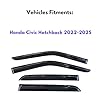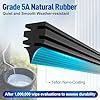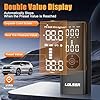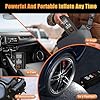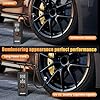Table of Contents
That disturbing rattle, the tinny sound, or the complete silence from one of your car’s speakers can be frustrating. When your car’s audio system fails, a critical question arises: are car speakers covered under warranty? The answer isn’t a simple yes or no, as it depends on a complex interplay between your vehicle’s factory warranty, the specifics of the speaker damage, and potentially, a separate warranty on aftermarket speakers you may have installed. This comprehensive guide will demystify car speaker warranties, explaining your coverage under different scenarios, your rights as a consumer, and the steps to take when you need to file a claim. Understanding the nuances of warranty coverage can save you significant time and money, turning a potentially stressful situation into a manageable one.
Understanding the Different Types of Warranties
When asking “are car speakers covered under warranty?”, you must first identify which warranty applies. There isn’t one single warranty but rather several layers of potential coverage that function independently.
Your Vehicle’s Manufacturer Warranty
Every new vehicle comes with a factory warranty from the automaker. This is typically divided into several components:
- Bumper-to-Bumper Warranty: This is the most comprehensive coverage, usually lasting 3 years/36,000 miles. It covers almost every component on the vehicle, including the factory-installed audio system and speakers, against defects in materials and workmanship.
- Powertrain Warranty: This covers the engine, transmission, and drivetrain. It does not cover speakers.
- Corrosion/Perforation Warranty: This covers rust-through on body panels and does not apply to speakers.
Under the factory warranty, your original equipment manufacturer (OEM) speakers are covered if they fail due to a manufacturing defect. This could include issues like a voice coil that was improperly centered from the factory, adhesive failures causing surrounds or dust caps to detach, or a speaker that simply does not produce sound upon delivery of the vehicle .
Aftermarket Car Speaker Warranties
When you purchase and install new speakers from brands like JL Audio, Rockford Fosgate, Kicker, or BOSS Audio Systems, these products come with their own separate manufacturer’s warranty. These warranties are completely independent of your vehicle’s factory coverage.
Most car audio products carry a one-year warranty from the original date of purchase, though some premium solutions offer two or three years of coverage . For example, BOSS Audio Systems offers a standard one-year warranty on its products, with extended terms for its “Elite” line . The core purpose of this warranty is to protect you against buying an item with a manufacturing defect .
Extended Warranties and Service Contracts
These are separate contracts you can purchase, often through a dealership or a third-party provider, to extend coverage beyond the factory warranty period. Whether they cover speakers depends entirely on the specific terms of the contract. Some may exclude audio equipment, while more comprehensive “electronics” or “entertainment” packages might include them. It is crucial to read the fine print of any extended service contract.
Table: Comparison of Warranty Types for Car Speakers
| Warranty Type | What It Covers | Typical Duration | Key Limitations |
|---|---|---|---|
| Vehicle Factory Warranty | Defects in the original factory-installed speakers. | Usually 3 years/36,000 miles. | Does not cover damage from misuse or aftermarket installation. |
| Aftermarket Speaker Warranty | Defects in materials and workmanship of the newly purchased speaker. | Most often 1 year; can be longer for premium brands. | Often requires purchase from an authorized retailer and professional installation for full term. |
| Extended Service Contract | Varies by contract; may cover factory audio system failure. | Varies (e.g., 5 years/60,000 miles). | Must review contract details carefully; may have specific exclusions for audio components. |
What Car Speaker Warranties Typically Cover
Understanding what is included under warranty is the first step toward a successful claim. Coverage is generally designed for failures that are not your fault.
Manufacturing and Workmanship Defects
This is the core of any warranty. It covers problems that originated during the design or assembly of the speaker at the factory. A manufacturer’s warranty would cover a new speaker that does not turn on or produce sound at all upon installation . Other clear examples include:
- A buzz or rattle from a new speaker that, upon diagnosis, is found to be caused by a voice coil that was not properly centered in the magnetic gap during assembly .
- Physical failures of adhesive bonds, such as when the surround detaches from the speaker cone or basket, or when the dust cap flies off after a few months of use, assuming no signs of excessive heat or abuse .
- A speaker that is dead on arrival (DOA). Reputable retailers will often replace these units on the spot from their inventory .
Specific Failure Scenarios
- Tearing of Surrounds or Cones: If a surround or cone material tears under normal use with recommended power levels, it may be considered a material defect. However, if the tear is caused by physical impact (e.g., a screwdriver slip during installation) or pressing on the cone, it would not be covered .
- Voice Coil Defects: A voice coil that fails due to a flaw in its winding or construction, with no evidence of overheating (burning smell, discoloration), should be covered.
- Wiring and Connection Issues: Internal wiring defects, such as a tinsel lead that breaks or detaches from the solder point due to a manufacturing flaw, are typically covered.
What Car Speaker Warranties Do NOT Cover
It is equally important to understand the common exclusions that void warranty coverage. Warranties protect against factory defects, not damage caused by the user or external factors.
User Abuse and Misuse
This is the most common reason for a denied warranty claim. Abuse occurs when the speaker is operated outside its intended design parameters.
- Overpowering and Clipping: The number one cause of speaker failure is a burnt voice coil caused by feeding the speaker too much power or, more commonly, a distorted (clipped) signal from an amplifier . Even a 500-watt amp can output 750-850 watts of distorted power when driven into clipping, which will easily destroy a 500-watt rated subwoofer. This is considered user abuse, not a manufacturing defect .
- Physical Damage: Any damage caused during installation or use is not covered. This includes a punctured cone or surround from a slipped screwdriver, a cracked basket from overtightening, or a speaker that has been physically dropped .
- Improper Installation: This includes using the wrong impedance (e.g., hooking up 2-ohm speakers to a head unit only stable to 4 ohms and frying the radio) , reversing polarity, or using incorrect wiring that leads to a short circuit.
Environmental and External Factors
- Water and Moisture Damage: If speakers, especially those in doors, are exposed to water intrusion and show signs of corrosion or water spotting, the warranty will be voided .
- Chemical Damage: Using harsh cleaning agents or solvents on the speaker cone or surround can cause deterioration and will void the warranty.
- Accidents and Modifications: Damage from a car accident, flooding, or any attempt to repair or modify the speaker by someone other than an authorized technician is not covered .
“Feature” Issues vs. Defects
A warranty is not a guarantee that you will like how the product sounds or functions. If you purchase a speaker and discover it doesn’t have the bass response you wanted or its tonal character isn’t to your liking, that is not a defect . It is crucial to test and understand a product’s capabilities before finalizing an installation.
Table: Is It Covered? A Guide to Common Speaker Problems
| Problem/Symptom | Typically Covered? | Reason |
|---|---|---|
| Speaker is completely dead upon first installation. | Yes | Presumed manufacturing defect (Dead on Arrival). |
| Voice coil is burnt, blackened, and has a smoky smell. | No | Caused by overpowering, clipping, or lack of proper power handling (user abuse). |
| Speaker makes a buzzing or rubbing sound at low volume. | Yes | Likely a defect in voice coil alignment or a debris in magnetic gap. |
| Foam surround is dry-rotted and crumbled. | No | Natural wear and tear or environmental damage over time. |
| Dust cap has become unglued and fallen off. | Yes | Defect in the adhesive workmanship during manufacturing. |
| Cone or surround is torn or punctured. | No | Physical abuse or accidental damage during installation/cleaning. |
Your Legal Rights: The Magnuson-Moss Warranty Act
In the United States, a powerful federal law protects consumers against unfair warranty practices: the Magnuson-Moss Warranty Act. Understanding this law is crucial when dealing with dealerships or manufacturers who may be reluctant to honor a warranty.
Protection Against “Tie-in Sales” Provisions
The Act prohibits manufacturers from voiding your vehicle’s warranty simply because you used an aftermarket part or had service performed at an independent shop . In the context of car audio, this means a car manufacturer cannot automatically void your vehicle’s warranty because you installed aftermarket speakers . This is known as protection against “tie-in sales” – they cannot force you to use their parts or services to maintain your warranty.
The Burden of Proof is on the Manufacturer
The critical nuance of the Magnuson-Moss Act is that while an aftermarket installation cannot void your warranty by itself, the manufacturer can deny a warranty claim if they can prove that the aftermarket part directly caused the damage in question .
For example:
- If you install new speakers and later have an issue with your sunroof, the dealership must honor the sunroof’s warranty. The speakers are unrelated .
- However, if you install 2-ohm aftermarket speakers on a factory radio designed only for 4-ohm loads and the radio’s internal amplifier fails, the dealership can legitimately deny the warranty claim on the radio. They have demonstrated that your modification caused the specific damage .
- The warranty on your vehicle’s powertrain would not be affected by an audio system modification.
This law ensures that warranty denials must be justified and specific, not blanket voidances.
How to Successfully File a Warranty Claim
When you suspect a speaker defect, following a structured process will maximize your chances of a smooth and successful warranty claim.
Step 1: Diagnose the Problem and Gather Documentation
Before contacting anyone, do some basic troubleshooting. Ensure the problem is truly the speaker and not a loose wire, a problem with the head unit, or a setting in the system. Once confident, gather your proof of purchase. For a vehicle warranty claim, this is your vehicle registration and any repair records. For an aftermarket claim, you need the original sales receipt. The warranty is valid from the original date of purchase, and the receipt is mandatory .
Step 2: Contact the Appropriate Party
- For Factory Speakers: Your first point of contact is the service department of your local car dealership.
- For Aftermarket Speakers: Contact the retailer where you purchased the speaker or the manufacturer’s customer support directly. Brands like BOSS Audio Systems require you to contact them for a Return Authorization (RA) number before sending anything back .
Step 3: Prepare for the Assessment
The retailer, manufacturer, or dealership will need to assess the speaker to determine if the failure is a covered defect. Be prepared to describe the problem in detail. For an aftermarket claim, you will likely need to remove the speaker and ship it to the manufacturer or retailer for inspection. You are typically responsible for the freight charges to return the product for aftermarket warranties .
Step 4: Understand the Resolution
If the claim is approved, the resolution is usually repair or replacement of the defective product at the sole discretion of the manufacturer . You will not typically receive a cash refund. If the original product is no longer available, you may receive a new or reconditioned unit of similar design and value. It’s important to note that a replacement product’s warranty usually does not extend the original warranty period; it is considered a transaction under the original term .
Proactive Steps to Protect Your Warranty Coverage
An ounce of prevention is worth a pound of cure. Taking these steps can help you avoid warranty headaches altogether.
Smart Purchasing and Installation Practices
- Buy from Authorized Retailers: Manufacturers will only honor warranties for products purchased from their authorized dealers. Buying from unauthorized sources, like some online marketplaces, often voids the warranty immediately .
- Consider Professional Installation: Having your speakers installed by a certified professional (look for MECP certification) ensures the job is done correctly. Many manufacturers, like BOSS Audio, even offer extended warranty terms when you can provide verifiable proof of professional installation . This creates a clear record and prevents installation errors that could void your warranty.
- Use Plug-and-Play Adapters: When replacing factory speakers, use vehicle-specific wiring harness adapters. These allow you to connect new speakers without cutting the factory wiring, preserving the electrical system and making the installation completely reversible, which helps avoid disputes with your vehicle dealer .
Proper Maintenance and Usage
- Avoid Clipping and Distortion: Learn to recognize the sound of distortion. If your speakers start to sound strained or harsh, turn the volume down. Feeding a clean signal is the single best thing you can do for speaker longevity.
- Match Power Levels: Ensure your amplifier’s output is appropriately matched to your speakers’ power handling capabilities. When in doubt, slightly more powerful speakers than your amp can provide is a safe margin.
- Protect from Moisture: For door speakers, consider adding aftermarket moisture barriers or using speakers with waterproof cones and surrounds if you live in a humid climate.
The Future of Repair Rights: The REPAIR Act
The landscape of vehicle repair and modification is evolving with technology. Modern vehicles, with their complex networks and telematics systems, can make it harder for independent shops and owners to access the data needed for repairs. In response, bipartisan legislation known as the REPAIR Act (Right to Equitable and Professional Auto Industry Repair) has been introduced in Congress .
This act aims to safeguard vehicle owners’ access to essential repair and maintenance data, ensuring that independent repair shops, parts manufacturers, and aftermarket service providers can continue to offer affordable and high-quality services . If passed, this legislation would further solidify the rights of consumers to modify and repair their vehicles, including audio systems, without being locked into a manufacturer’s ecosystem. A survey by the CAR Coalition highlights that 94% of vehicle owners want the freedom to choose where their vehicle is repaired , underscoring the broad public support for such rights.
Summary and Key Takeaways
Navigating the world of car speaker warranties requires understanding a few key principles. The answer to “are car speakers covered under warranty?” is a conditional yes, depending on the nature of the failure and the specific warranty in question.
- Coverage is Specific: Your vehicle’s factory warranty covers defects in the original speakers, while aftermarket speakers come with their own separate warranty from the audio manufacturer.
- The Law is on Your Side: The Magnuson-Moss Warranty Act prevents a vehicle manufacturer from voiding your warranty simply for installing aftermarket speakers. They can only deny a claim if they prove your modification caused a specific, related failure.
- Abuse is Not Covered: Warranties cover defects in materials and workmanship, not damage caused by overpowering, clipping, physical abuse, improper installation, or environmental factors.
- Documentation is Key: Always keep your original proof of purchase. For aftermarket products, buy from authorized retailers and consider professional installation to ensure full coverage and potentially extended warranty terms.
- The Future is Open: Legislative efforts like the REPAIR Act seek to further protect consumer choice and ensure fair access to the data and tools needed for vehicle repair and modification.
By being an informed consumer, you can confidently upgrade your car’s audio system and know exactly what to do if a speaker fails, ensuring you get the best possible sound and protection for your investment.
